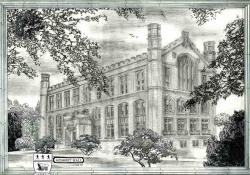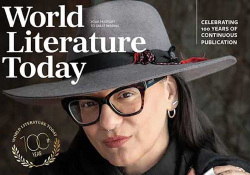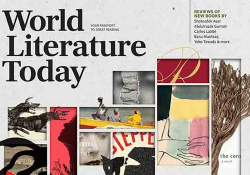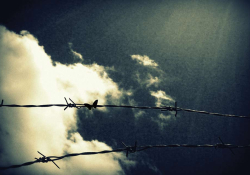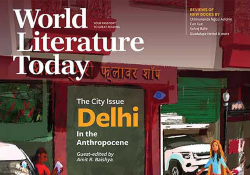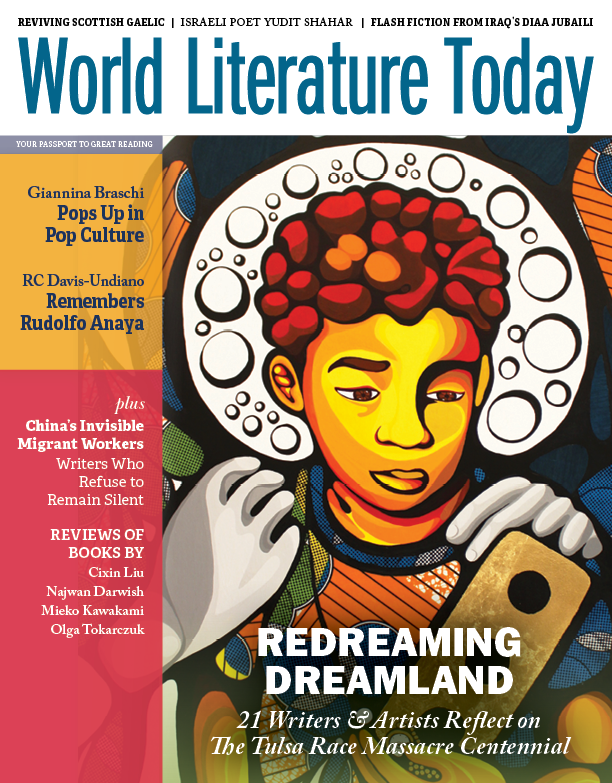Editor’s Note
We were never meant to survive.
– Audre Lorde, “A Litany for Survival” (1978)
 Amid the destruction of the 1921 Tulsa Race Massacre—the white assault on the city’s Greenwood District that claimed as many as three hundred Black lives and displaced thousands more residents—the offices of the Tulsa Star newspaper were reduced to ashes. In the years immediately following the end of World War I, the Star’s publisher, A. J. Smitherman, along with fellow community leader J. B. Stradford, had traveled to towns around the state to prevent lynchings against African American citizens. Earlier that spring, Smitherman had invited NAACP cofounder and antilynching crusader W. E. B. Du Bois to give a lecture in Tulsa. Arsonists also torched Smitherman’s home, where he lived with his wife and five children, during the massacre. Accused of inciting the so-called race riot, he and his family were forced to flee Tulsa, as was Stradford.
Amid the destruction of the 1921 Tulsa Race Massacre—the white assault on the city’s Greenwood District that claimed as many as three hundred Black lives and displaced thousands more residents—the offices of the Tulsa Star newspaper were reduced to ashes. In the years immediately following the end of World War I, the Star’s publisher, A. J. Smitherman, along with fellow community leader J. B. Stradford, had traveled to towns around the state to prevent lynchings against African American citizens. Earlier that spring, Smitherman had invited NAACP cofounder and antilynching crusader W. E. B. Du Bois to give a lecture in Tulsa. Arsonists also torched Smitherman’s home, where he lived with his wife and five children, during the massacre. Accused of inciting the so-called race riot, he and his family were forced to flee Tulsa, as was Stradford.
For decades before statehood, print culture had flourished in the territories that, in 1907, would be patched together in a state called Oklahoma. After having been force-marched to Indian Territory in the 1830s in the wake of the Indian Removal Act, the Cherokee, Chickasaw, Choctaw, Creek, and Seminole Tribes began publishing work in their Native languages almost immediately upon arrival. Descendants of Freedmen who had been brought to the territory as slaves along the Trail of Tears also founded newspapers in the many all-Black townships that sprang up after the Civil War. Given A. J. Smitherman’s prominence in Greenwood, it’s clear that both the activist publisher and his newspaper were directly targeted during the pogrom of May 31 and June 1, 1921. Smitherman wrote one of the first literary responses to the massacre, “A Descriptive Poem of the Tulsa Race Riot and Massacre” (1922), based on his own firsthand experiences. Mary E. Jones Parrish’s Events of the Tulsa Disaster (1922) also preserved many eyewitness testimonies in the immediate aftermath. Having lost so much else, Greenwood’s survivors retained the power of the spoken and written word to render witness to what happened, despite repeated attempts to bury the massacre story along with the bodies of its victims.
A century later, “Redreaming Dreamland” gathers the work of twenty-one writers and artists who reflect on the historical legacy of 1921 while also wrestling with its meaning in our current historical moment. In the cover feature that begins on page 40, readers will encounter perspectives by writers with deep firsthand knowledge of Tulsa as well as authors who place the events of 1921 in a national or international context. If the lessons of the past few years have taught us anything, we now know that no tragedy ever happens in a vacuum, and even if what happened in 1921 had—and continues to have—profound effects on the Greenwood community, our understanding of the massacre is incomplete if we view it only through a local lens: the magnitude of what happened in Tulsa had statewide and national repercussions that reverberate to this day.
In 1921, A. J. Smitherman’s former managing editor, Theodore Baughman, salvaged the Tulsa Star’s badly damaged printing press and eventually launched the Oklahoma Eagle, which is still in print today and claims to be “the last surviving original black-owned business still operating within the historic Black Wall Street footprint.” A true phoenix, Greenwood and the Greenwood story will continue to be told by those who survived and rebuilt, having claimed the power of the word to witness, to remember, and to dream anew.
Daniel Simon
Commemorating the Tulsa Race Massacre Centennial
The immediate impetus for this project began two years ago, when a student-led rally at the Oklahoma Memorial Union ignited a long-simmering conversation about diversity, inclusion, and racial equity at the University of Oklahoma. Immediately afterward, I reached out to my colleague Karlos Hill, chair of OU’s Clara Luper Department of African & African American Studies, to thank him for offering words of witness, solidarity, and historical memory at the rally. I also broached with him the idea of a special issue of WLT, to coincide with the centennial of the 1921 Tulsa Race Massacre, featuring writers and artists reflecting on the massacre but with equal emphasis on the current state of African American multicultural vitality in the twenty-first century, anchored in Oklahoma but rippling out on a global scale. He immediately and enthusiastically signed on to the idea.
The current issue of WLT is but one result of that conversation, which began in earnest two years ago but was also amplified in summer 2020, when demonstrations following the murder of George Floyd erupted worldwide. Dr. Hill and I along with our colleague Kalenda Eaton formed a committee to coordinate a yearlong series of more than two dozen courses, special projects, and events devoted to the centennial across OU’s three campuses in Norman, Tulsa, and Oklahoma City. As we go to press, there is still time to register for the three-day “Reflecting on the Past, Facing the Future” symposium (April 8–10) and to watch the I Dream of Greenwood dance premiere that week; visit ou.edu/tulsa1921 to learn more.
Three generous grants made these centennial projects possible. We are grateful to Oklahoma Humanities, not only for their major grant, but also to Carla Walker, associate director and editor of Oklahoma Humanities magazine, for her enthusiastic partnership in support of co-published content in our respective spring and spring/summer 2021 issues. The Norman Arts Council and a Faculty Investment Program grant sponsored by OU’s Vice President for Research & Partnerships also provided major funding. (The complete list of sponsors can be found on page 47.) Our profound thanks goes out to all who have supported this work, both at OU and beyond.
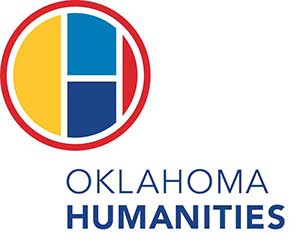 .
. 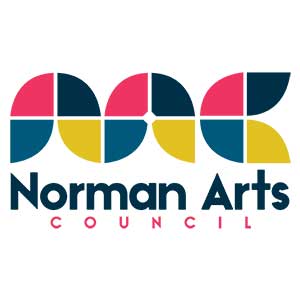
The University of Oklahoma’s Commemoration of the Tulsa Race Massacre Centennial
Statewide Sponsors
Norman Arts Council – CARES Act Recovery Grant
Erinn Gavaghan, Executive Director
The National Endowment for the Humanities & Oklahoma Humanities – Major Grant
Caroline Lowery, Executive Director
OSU-Tulsa’s Center for Poets & Writers
Dr. Lindsey Claire Smith, Director
OU Sponsors
Joseph Harroz Jr., JD
President of the University of Oklahoma
Dr. Jill Irvine
Interim Senior Vice President & Provost
Dr. Tomás Díaz de la Rubia
Vice President for Research & Partnerships & The Faculty Investment Program
Dr. Belinda Higgs Hyppolite
Vice President for Diversity, Equity, and Inclusion
Michael Bearden, MFA, Director
OU School of Dance
Dr. Karlos Hill, Chair
Clara Luper Department of African & African American Studies
Dr. RC Davis-Undiano, Executive Director
World Literature Today
Puterbaugh Endowment
Corporate Sponsor
Wilson Lau, Vice President
NuTraditions
For more information, visit ou.edu/tulsa1921
I would especially like to thank my colleagues on OU’s Tulsa Race Massacre Centennial Coordinating Committee, Kalenda Eaton and Karlos Hill, for their exceptional commitment to our work together. Since 2002, I have helped publish more than ninety issues of WLT, and I consider this the most important one I’ve ever worked on.
